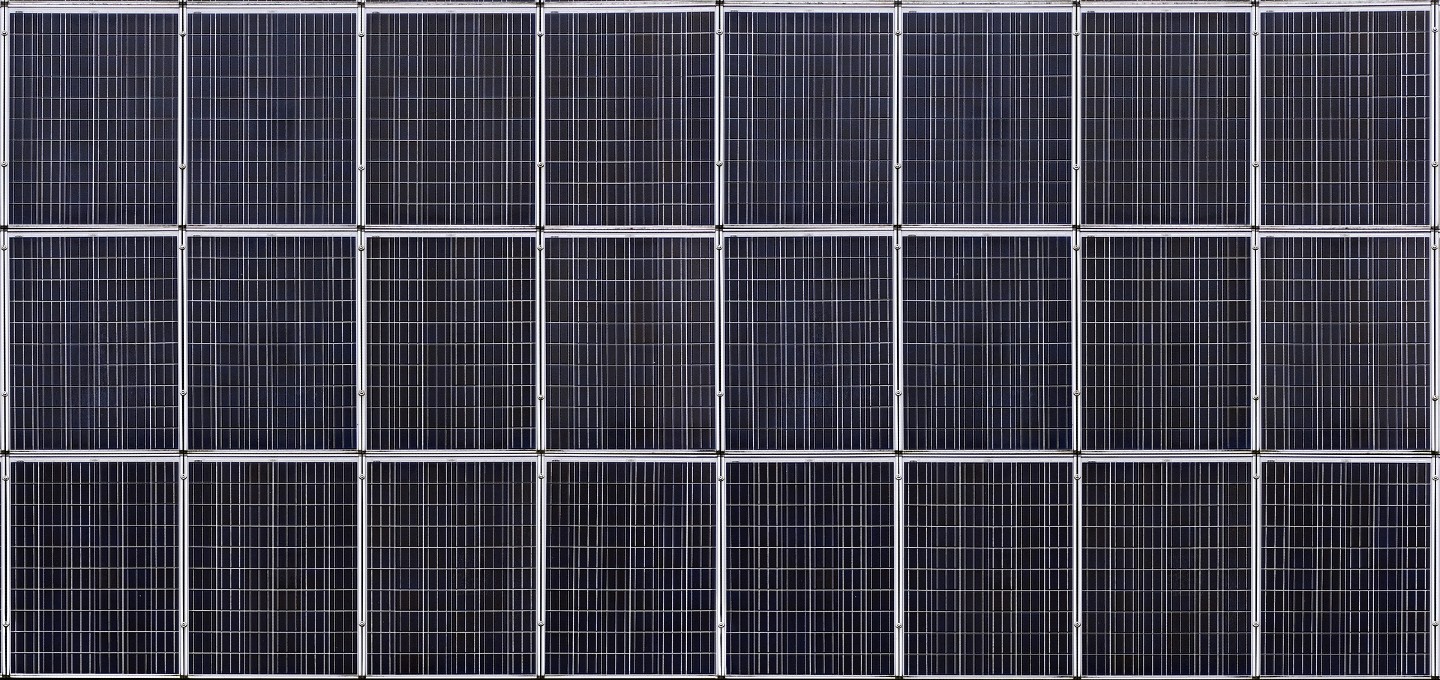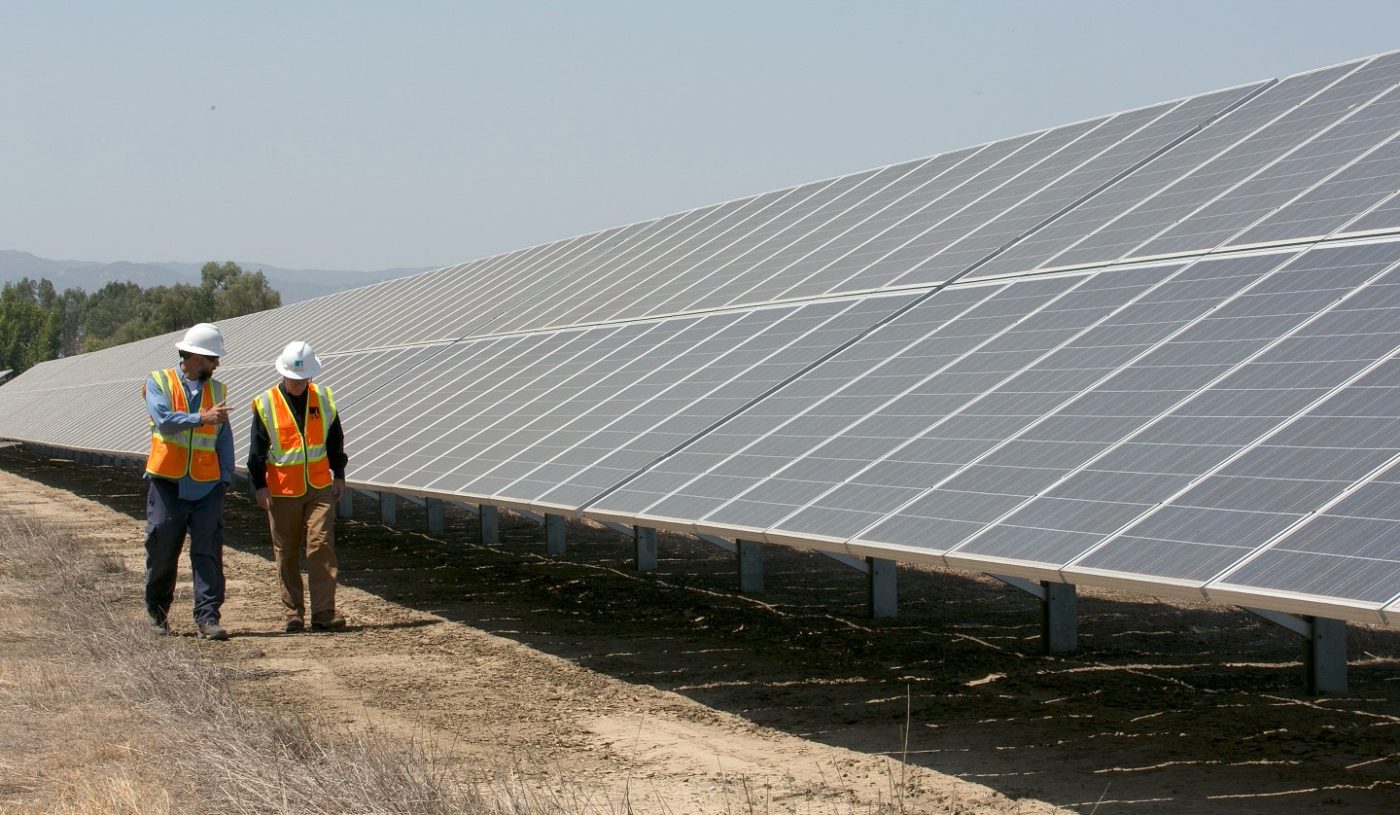
Rich countries face soon-approaching deadlines to try to avoid the worst effects of climate degradation. Last month, an urgent new report from the International Energy Agency (IEA) warned that sharp and rapid cuts in polluting emissions are needed, especially from coal, and that governments must stop investing now in fossil fuels like oil and gas fields.
More than 100 countries including the U.S. have pledged to reach net-zero emissions by 2050, but most lack binding laws to make it happen. Global energy-related carbon emissions are heading for their second-largest annual increase ever, the IEA report found. Coal demand is set to approach its recent peak coming out of the coronavirus pandemic.
To be on-track for net-zero emissions by 2050, the U.S. needs to halve our polluting emissions as soon as 2030. Coal and fossil gas plants must be retired by 2035. The share of energy generated from renewable sources is rising, but not blasting off quickly enough to meet these targets.
For the U.S. to stay within the emissions bounds of the Paris Agreement on climate, the country needs to rapidly scale up renewable energy production. The IEA says that solar and wind production must quadruple by 2030: “For solar power, it is equivalent to installing the world’s current largest solar park roughly every day.”
Many climate experts say the world has to “electrify everything” with greener electricity from renewable sources to decarbonize everything from gasoline-powered vehicles to fossil gas-burning heating systems. Dozens of U.S. states and cities are passing mandates to reach 100% carbon-free electricity by 2035, and a national clean energy standard is being proposed to Congress—including a broad version in President Biden’s infrastructure proposal—as a pillar of a just transition away from dirty energy sources.
Solar and wind currently make up about a tenth of the global power mix, an August report by a clean energy think tank found. In the U.S., while the use of renewable energy has been increasing, an Energy Information Administration report estimates that renewables (including hydropower) will generate just 22% of U.S. electricity in 2021. Coal will bump its share back up to 24% this year, behind fossil gas at 34% and ahead of nuclear at 20%, according to the agency.
Since the Paris climate accord, fossil fuel companies have received $3.8 trillion in financing from the world’s 60 biggest banks, and governments worldwide provide $444 billion in subsidies to oil, gas, and coal production, including the U.S. government’s support at around $20.5 billion. This path will rocket the planet over the 2 degrees Celsius threshold—and without strong climate policy, runaway warming will unleash what the IPCC previously described as “substantial species extinctions” and “large risks to global and regional food security.”
Blockchain applications have been in the news for the carbon emissions associated with some of the largest, like the one underneath the Bitcoin cryptocurrency. Facing the demands for renewable electricity needed by 2030, the features of blockchain technology can help local green energy ventures scale up solar and wind power, hastening the decline of coal.
Building the First Global Climate Market
The Paris Agreement on climate signed in December 2015 by nearly 200 nations contained Article 6, which sought to enable collaboration on emissions reductions by building a U.N.-sanctioned market for carbon trading.
“For example, country A could pay for country B to build a wind farm instead of a coal plant. Emissions are reduced, country B benefits from the clean energy and country A gets credit for the reductions,” one of the article’s negotiators wrote in a summary blog post.
Over five years later, though, the mechanisms laid out in Article 6 have yet to be implemented, due to complications both bureaucratic and technical—after all, many countries do not have binding climate laws on the books yet.
Climate advocates saw the need for tools for countries to operationalize their Article 6 commitments, and for immutable record-keeping of carbon offsets one leading project is building on the Ethereum blockchain. Some of Ethereum’s core applications are smart contracts, which can execute transactions when agreed-upon conditions are met, and tokenization, which can bundle and trade intangible assets according to transparent rules. (Blockchains can be public or private, global like Ethereum or hyperlocal like a neighborhood microgrid, and can be integrated with other decentralized systems to enable peer-to-peer transactions.)
The Blockchain for Climate Foundation, a Vancouver-based nonprofit organization, has this year developed a beta version of an Ethereum-based platform that will enable officially-recognized international transfers of emissions reductions, called “Blockchain Internationally Transferred Mitigation Outcomes” (BITMOs). Each BITMO token contains data documenting credit for one ton of carbon.

Joseph Pallant, the group’s founder and executive director, has worked in carbon markets since 2004, going back to developing emissions offsets as part of the Kyoto Protocol. “A key native attribute of blockchains as a product developer,” Pallant told me, “is they’re a tool that could help to create intangible environmental assets to represent tons of CO2 kept out of the atmosphere, where tokenization’s wrapping up and spooling of information in individual tokens was like what we do for environmental assets.”
The guarantees of authenticity made possible by blockchains ensure that offset credits stay attached to the documentation that prove their value—without it, “a portfolio could start to lose its ironclad connection” to real-world emissions reductions, Pallant says. Blockchain tech can be assured to prevent double-counting of reduction credits.
“Building a tool for Paris Agreement carbon markets gives the ability to invest resources from one country to develop emission reduction options in another part of the world and have carbon incomes flow back to the investing country,” Pallant said, “creating opportunities to hunt for renewable energy around the world, bolstering the business case through evaluations of the emissions reductions made possible by those projects.”
Pallant said that the BITMO platform is live on Ethereum’s Rinkeby test network for U.N. member countries to start issuing and exchanging credits. Under the Paris Agreement, a governing body still has to formally approve BITMO tokens, but then large emitters would be allowed to use BITMOs for compliance with their targets. While in the past, the United Nations’ timeline for resolving national carbon accounts in the transaction log was delayed in biannual reports, the BITMO platform creates a public ledger for carbon market participants that’s updated every 15 seconds, so they always know where their jurisdiction sits when making buying decisions. “This creates a disruptive alternative that’s appropriately secure for countries to trade emission reduction outcomes and the movement of offsets around the world non-controversially,” Pallant said.
Eth2 and Energy Efficiency
The Ethereum blockchain has long planned for its operations to become vastly more efficient through a comprehensive upgrade called “Eth2.” After several years of postponement, the Ethereum Foundation that coordinates technical development of the decentralized platform has demonstrated progress on the switch-over that will tremendously reduce the network’s electricity consumption. The first part of the Ethereum system upgrade launched on Dec. 1 of last year, and the goal of its leading engineers is to complete “The Merge” by the end of this year, with other components finished next year.
For Eth2, the Ethereum blockchain will move from the current proof-of-work (PoW) protocol to a proof-of-stake (PoS) protocol, whose efficiency gains are expected to have the effect of slashing by 99% the carbon emissions it generates. More than just getting down to net-zero in its carbon emissions, Ethereum and other proof-of-stake blockchains have the potential to become carbon-negative: creating more carbon-free energy than they use, such as by coordinating markets for “prosumer”-generated solar energy and power utilities using renewable energy.
Ben Edgington, an Ethereum project lead for “The Merge,” told me, “The move to Proof of Stake is now being discussed on Ethereum All Core Devs calls, which is the governance forum for Ethereum. These calls are streamed to the Ethereum Foundation YouTube channel. Recent discussion on these calls has been around the timing of The Merge… There is an ongoing hackathon effort among teams to implement a testnet for The Merge. This should demonstrate that all the technical pieces are in place, and that the move to Proof of Stake is only about delivery now.” He also co-hosts a weekly podcast with research analyst Christine Kim of Coindesk on Eth2 news and progress.
The grand move from a PoW to PoS protocol has been discussed and planned since Ethereum’s launch in 2015. The current “mining” activity on Ethereum’s PoW chain, where computers solve puzzles to process transactions and create blocks, earning a fraction of the network’s cryptocurrency (Ether) as reward, will be turned off for the PoS consensus generation. Based on back-of-the-envelope calculations of the number of staking nodes that will consume electricity with Eth2, “Ethereum staking power consumption is at least one thousand times lower than its proof of work power consumption,” Edgington said.
New Tech for Renewable Energy
The U.S. has been aware of the climate crisis for decades, and clean electricity production needs to roughly quadruple from its current share of one-fifth of energy produced. So why aren’t “D.I.Y.” deployments like rooftop solar and wind farms, enabling peer-to-peer and local green energy trading, far more widespread, hastening coal’s end? It’s not just about the huge scale that fossil-heavy utilities produce: new modeling of the energy grid has found that distributed energy resources (DERs) like rooftop solar enable more utility-scale renewables.
In the U.S., development of peer-to-peer energy markets over the past half-decade has been hampered by the restrictive regulatory environment, as well as the political influence of powerful utilities and energy companies—what one analyst described as a situation where p2p markets are “administratively difficult and the rewards don’t justify it.”
Utilities in the U.S. spend huge amounts on campaign contributions and lobbying to maintain their monopolies, especially in state houses, as seen in the recent $61 million bribery scandal in Ohio’s General Assembly that resulted in a billion-dollar ratepayer bailout for a powerful energy company. The costs of the status quo in Ohio and the state bill that passed with a racketeering scheme alone include more than $2 billion in excess utility bills and $7 billion in health care costs, new research found. The trade associations of utilities lobby heavily against government policies to increase renewable energy and wind down use of fossil fuels like natural gas in cities.
In the U.S., one company working on implementing distributed energy is LO3 Energy, a technology and business development consulting firm that makes the Pando platform for green communities. Headquartered in Portland, Oregon, with 10 active projects worldwide, the company announced an $11 million Series B funding round earlier this year. In late 2019, the company launched the first U.S. local commercial marketplace for clean energy in a partnership with Vermont’s Green Mountain Power, connecting local businesses like ski resorts with home solar owners.
Matt Brown, LO3 Energy’s VP of corporate development, told me that social connectivity is a catalyst for greater renewable energy generation—like installing rooftop solar on schools. “At the end of the day, distributed resources are going to be deployed at customer sites, so how value accrues to the user and the system is the key question of these applications. How are you going to design retail programs, tariffs, rates that account for customer programs?,” he said. A highly-awaited federal rulemaking last year, called FERC Order 2222, set the stage for DERs to compete in wholesale energy markets.
Brown said that currently, “There’s a delta between the value of exported generation in net metering” — credits earned for sending solar power to the grid — “and the energy component of a retail energy rate.” The Pando platform writes a hash of its system’s energy transaction data to a custom blockchain—transmitting a huge data input into a shorter output of encrypted information—thereby creating an immutable audit trail that enables multi-stakeholder coordination between third-party aggregators, utilities, market operators, and customers.
“We can create real value by not double counting, not under or over-compensating,” Brown said. “We need shared visibility and coordination and blockchain is quite good at accounting for it.” Other features of blockchains Brown mentioned include respecting individual consumers’ privacy in energy transactions, allowing prosumers to bundle assets before transactions, and designing credits for low-income communities.
Rooftop Solar Internationally
In other countries, a variety of projects—from for-profit startups to local cooperatives—have successfully increased supply of solar and wind energy outside of legacy utility companies, and coordinated markets to incentivize the production of renewable energy. Several of the projects use decentralized technologies like blockchains in data platforms that create localized energy marketplaces for transacting energy across the existing grid, connecting consumers, solar-generating prosumers, energy companies, and regional energy sources like wind farms.

A February 2019 article in the peer-reviewed journal Renewable and Sustainable Energy Reviews surveyed the uses of blockchain technology in the energy sector, including capitalizing the construction of solar plants or creating tokens used to purchase excess solar energy from prosumers.
One of the most mature ventures in peer-to-peer energy trading is the Australian startup Power Ledger, which created a residential electricity trading marketplace. A June 2020 company report on the company’s trial, which was partially funded by the Australian government, “found the technology is technically feasible, is viewed positively by participants and can lead to localised energy autonomy in a big boost for peer-to-peer systems globally.” In addition to the trial demonstrating significant potential for energy bill savings, its users could earn credits for exporting energy back to the grid. The company’s trial made plans to expand to Japan, as well as partners including India’s Tech Behindra, Vector in New Zealand, and BCPG in Thailand. POWR, the utility token that grants access to the platform and that also provides loyalty rewards, has a current market cap of $195 million.
For more real-world blockchain uses for green energy, I spoke with Matthew Hale, an entrepreneur and climate change advocate based in Australia, where a relatively decentralized energy market has enabled a startup ecosystem. “One use of blockchain is as a database in peer-to-peer energy trading, because in different energy markets it’s difficult to trade peer-to-peer in the existing regimes,” Hale said. “Looking at the current trust stack—there’s an energy company, a government auditor, often a third party payment provider—we can abstract all of that functionality to a blockchain infrastructure layer that’s transparent and legitimate by default.”
Hale mentioned existing blockchain efforts like solar-focused microgrids in Thailand and the WePower platform in Estonia that can produce truly cost-reflective pricing: “When entities have no innate incentive to align, the blockchain tech makes them cooperate.” In Thailand, a state owned energy company joined up with a real estate company to offer rooftop solar and the ability for households to trade energy p2p. In Estonia, which has 100% smart meter coverage, a year’s worth of energy grid usage was uploaded to the Ethereum blockchain network and transformed into 39 billion smart energy tokens which can be purchased and traded by any power provider, large or small.
Hale has worked with Enosi, a startup that uses a blockchain to prove how much of a household’s energy use was renewable, without need for certificates. Its FAQ reads: “People trading energy need to be assured that no one is tampering with the trade data or selling the same unit of energy twice. Energy trading requires immutability of records and shared view of transactions, particularly for final trade data and trading rules.”
One of the first U.S.-based p2p energy markets was the Brooklyn Microgrid, which began in April 2016 and was the subject of a Jan. 2018 case study on how it enabled solar panel owners to sell excess energy through a blockchain platform called Exergy. In Oct. 2019, the project petitioned members of the New York Public Service Commission, the state agency overseeing utilities, to approve a “regulatory sandbox” that would allow city residents to purchase locally-generated solar in addition to electricity from ConEd. Someone close to the project told me the petition campaign was put on the back-burner during last year’s coronavirus pandemic.
Yet it’s still early days for decentralized technology for distributed energy resources. Earlier this year, another Brooklyn-based climate technology startup, BlocPower, announced a $63 million Series A funding round to bring clean energy projects to city buildings, including developing local, cooperatively-owned microgrids with a focus on low-income communities. A white paper from the startup released last month lays out a “new protocol for environmental justice carbon offset tokens” that would swap emissions offsets on public blockchains—where neighborhoods like Crown Heights and Brownsville can swap green energy and end the use of heavy heating oil in building furnaces. BlocPower’s vision seeks to bring the U.N. effort to the local level: “align financial incentives with supporting verifiably additive, sustainable projects, and accelerate environmental equity across marginalized communities globally.”
